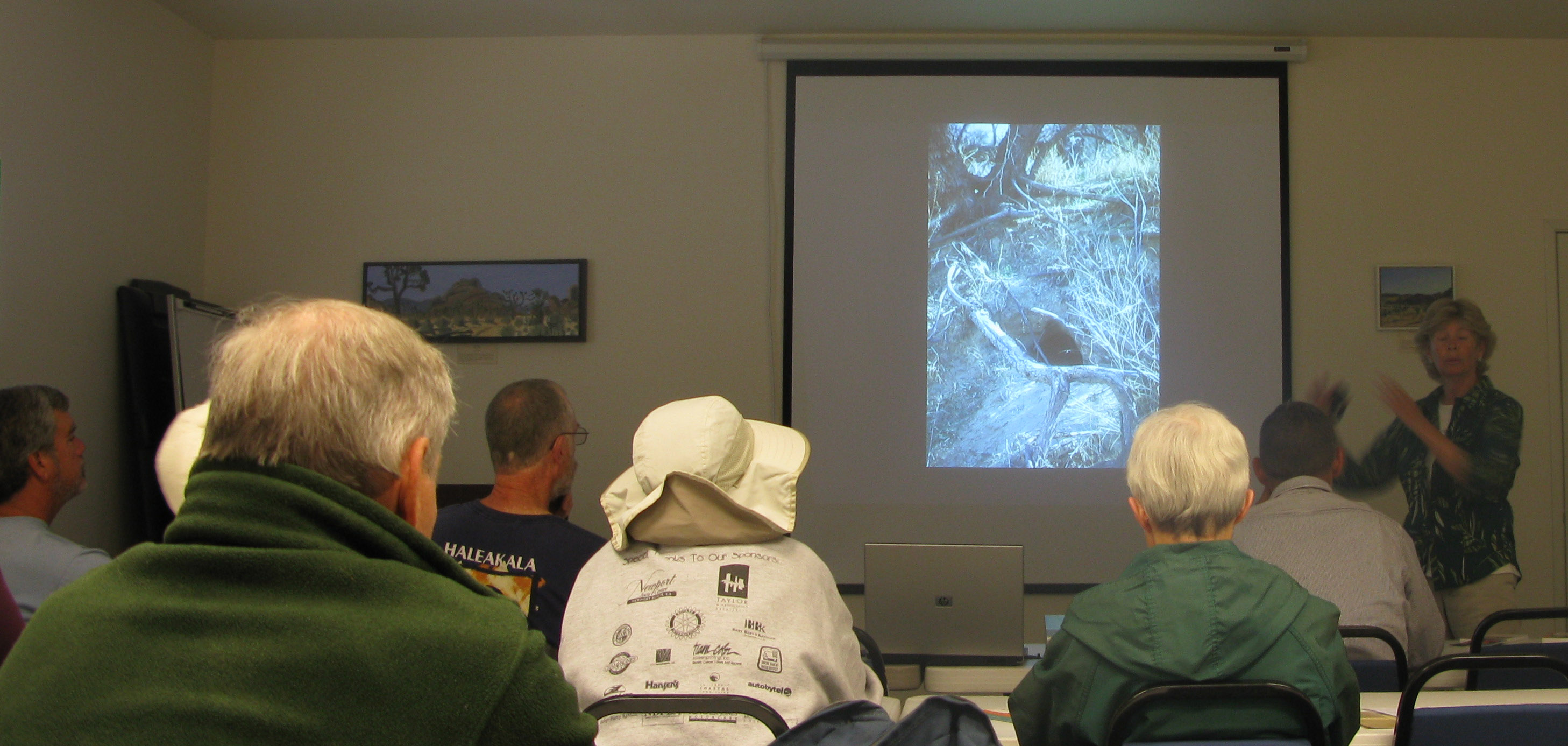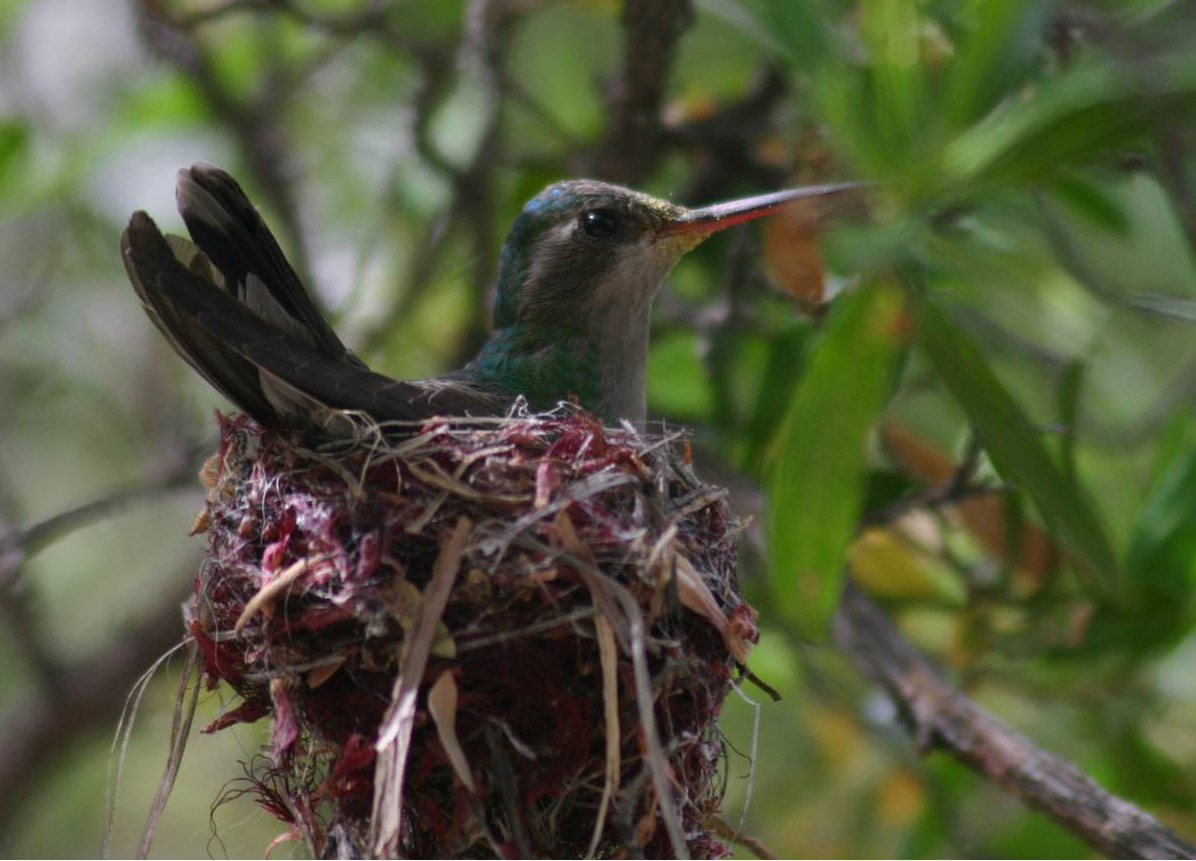Pinau Merlin is available for speaking engagements on a wide diversity of natural history topics:
Keynote speaker
Natural history programs, classes, workshops and retreats, designed to meet your needs
Nature guide for walks and field trips, including night walks
Travel expeditions. Pinau leads trips throughout the U.S., Mexico and Central America
Tracking and animal language classes and workshops
Natural history consulting for film crews and documentaries
Pinau also designs natural history interpretive displays including:
Nature trails, including bird feeding stations, interpretive ramadas, signs
Nature centers with Interpretive exhibits and displays and Interpretive signs
Programs can be designed to meet the needs/interests of your group
Coming to Your Senses
In our busy urban lifestyles we are innundated and overwhelmed with stimulation (traffic, sirens, loud music). In self defense we shut down and shut out most of the stimulation. When we finally venture out in nature we're already shut down. Discover how to re-connect to what we once knew. Learn how to develop all your senses to become a more aware observer and how to understand the language of the wild. Discover how to move, listen, observe, smell and use natural camouflage in the outdoors. Learn to understand where animals are likely to be in an area by learning to look at the resource from the animal’s point of view and greatly enhance your chances of seeing more wildlife. The many benefits - physical, emotional and mental - of tuning back in, carry over into our work and personal lives.
Secrets of the Sonoran Desert
The Sonoran desert – a land of weird giant cacti, Gila monsters and other strange animals. .It is often defined by negatives – a place without water, barren, inhospitable to life. This image of deserts as hostile environments has persisted, though in truth, the Sonoran Desert is the lushest desert in the world, teeming with a wild diversity of birds, plants and animals. Here, nature‘s exuberant experiments with life are showcased, as the plants and animals of the region display a stunning variety of adaptive strategies – behavioral, anatomical and physiological, that aid them to not just survive, but to thrive in this desert Eden.
Nature's Survival Lessons
We're all looking for guidance and direction
during these shifting, changing times. Nature
is the best teacher when it comes to adaptive
strategies for surviving and thriving in a wide
variety of conditions. Discover what mountain
lions, bighorn sheep, tortoises, vultures and
other animals can teach us about succeeding
in a changing and sometimes challenging world.
Jaguars and Ocelots, our neotropical cats
Exquisitely beautiful and surrounded by an aura
of mystery, these cats evoke a sense of awe in us, for they are the visible soul of the wild. Join us to discover how these secretive and elusive cats thrive just a few miles south in Sonora, Mexico and survive at the very edge of their range here in Arizona's wild country.
Where the Chicks Hang Out
(a guide to nesting birds)Southern Arizona is one of the birding meccas in the U.S., with over 15 species of hummingbirds, and everything from Elf Owls to Elegant Trogons. Many species from Mexico reach their northern limit in southern Arizona and are not seen anywhere else in the United States. Discover why quail nest on the ground, why desert birds “unincubate” their eggs, how turkey vultures defend themselves, how cavity nesting birds keep the nest clean and much more.Join us for a fun look at the life histories and breeding biology of Northern Caracaras, Burrowing Owls, gnatcatchers, Gila woodpeckers, Gambel’s Quail, Cactus Wrens, Roadrunners, Phainopeplas and many other species.
Home is Where the Hole is - a field guide to holes in the ground The desert is alive with holes in the ground. Holes, depressions and burrows in the ground are a little investigated phenomenon that presents a fascinating look into the lives of our wildlife neighbors. Why don’t snakes make their own burrows? Why are kit foxes the only canid to live in dens year round? Why does a packrat gather and build a huge mound of debris? Share a peek into the private lives of these subterranean dwellers and discover who’s
behind all that digging.
Lifestyles of the Not-So-Famous
Join us for a fun peek into the lives and natural history of the less well known, but no less fascinating, desert critters, (aka charismatic minifauna) such as ringtail cats, jackrabbits, Gila monsters, turkey vultures, roadrunners, snakes and Sonoran Desert toads among others. Discover how tropical animals like tarantulas survive in a desert, why spadefoot toads might eat only one meal a year and much more.
The Magic of Hummingbirds
Hummingbirds are among the most fascinating birds of the world. Their iridescent colors, acrobatic flying skills, small size and dynamic temperaments delight and intrigue us, but their natural history is even more amazing. Arizona hosts more hummingbirds than anyplace else in the United States.
Secrets of the Owls and Night Birds
Discover the world of these nocturnal hunters as they silently stalk the night for rodents and small prey. Learn about the nighthawks, poorwills and various owls and how they hunt, their adaptive strategies, which mate for life, how long they live, where they nest and much more. Learn to identify the owls and other nightbirds by their calls and by their eyeshine.
Saguaros, Agaves and Other Weird PlantsThe Sonoran Desert teems with the unusual plants and growth forms that make our region so unique. Discover the critical importance the giant saguaro plays in the Sonoran Desert, why prickly pear is not nearly as drought tolerant as cholla, why ocotillo can sprout new leaves within days of a rain, which is the most drought tolerant plant in North America, how desert plants protect themselves with noxious chemicals and learn about sandfood, the famous “second harvest” and how Native peoples use these plants for food and medicines. .
Signs of Life: Reading the Environment
The best trackers learn not just to identify footprints but to read and understand the whole environment – every scent, sound or sign of life they encounter outdoors. Discover the fun of walking in the desert and being able to read and interpret from the sign what that pair of foxes was up to, that a rattlesnake was napping here or that a mountain lion was hunting nearby. It’s also a great way to actually see more wildlife, as well as developing greater observing and awareness skills.
Sonoran Desert Spring
"The earth laughs in flowers." Ralph Waldo Emerson
In special years, when the winter rains have been plentiful, the Sonoran Desert throws a party, with wildflowers as the guests of honor. Sand dunes and desert landscapes burst into an incredible and stunning display of wildflowers. Some of these seeds may have waited ten, twenty or even more years for the right conditions to germinate into rainbow carpets of wildflowers. Discover why flowers are shaped and colored as they are and the various ways they attract their pollinators.
Sonoran Desert Pollinators
“People from a planet without flowers would think we must be mad with joy the whole time to have such things about us.” Writer Iris Murdock.
Flowers have a profound and powerful effect on humans, but their charm, beautiful colors, intricate shapes and delicate fragrances are all intended to attract other creatures, such as bees, wasps, hummingbirds, butterflies and moths for reproductive purposes. Plants employ an amazing diversity of pollination strategies and many fascinating mutualisms have evolved between flowers and their pollinators. We'll learn about the various pollination syndromes, how plants encourage the specific pollinators they want while actively discouraging others, how to recognize from the flower who the pollinator should be, why flowers are various colors, how certain flowers practice deception and some of the clever tactics flowers utilize to ensure their pollination.
.
Beguiling Bats
Everyone knows bats hang upside down but do you know why they do? Under the cover of darkness, bats are living amazing lives that most of us are unaware of. Discover the fascinating and intriguing world of the bats as we explore their intricate life history and strange habits.
"I would take any class from this instructor. Pinau knows how to teach!" program participant, Joshua Tree National Park
Program Offerings
Services
Pinau Merlin
Author, Lecturer, Naturalist
"Re-connecting with Nature"

